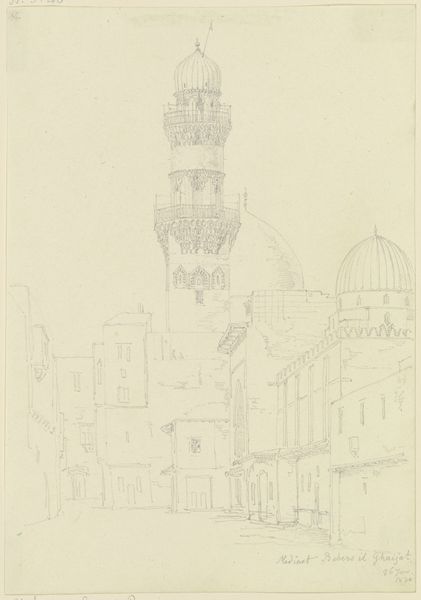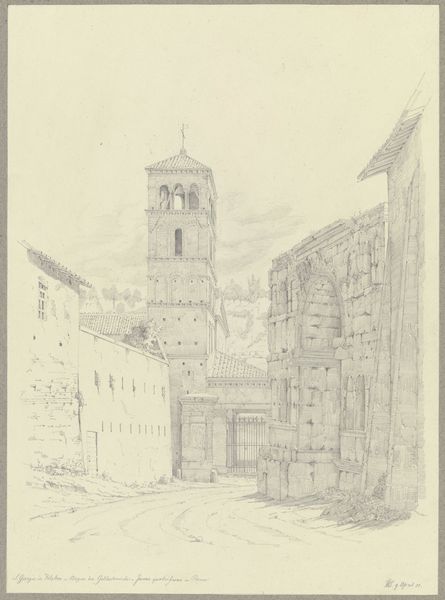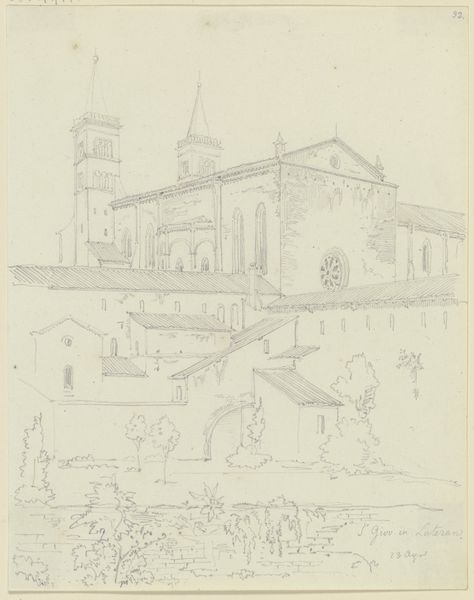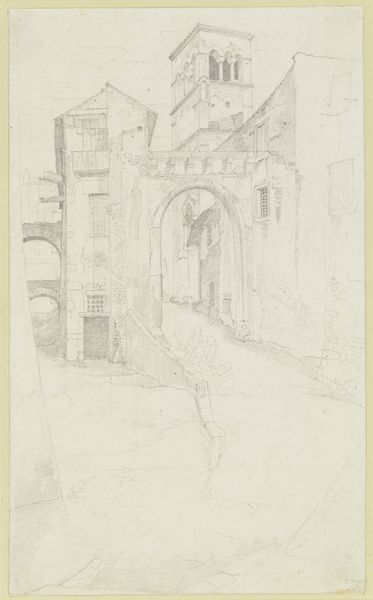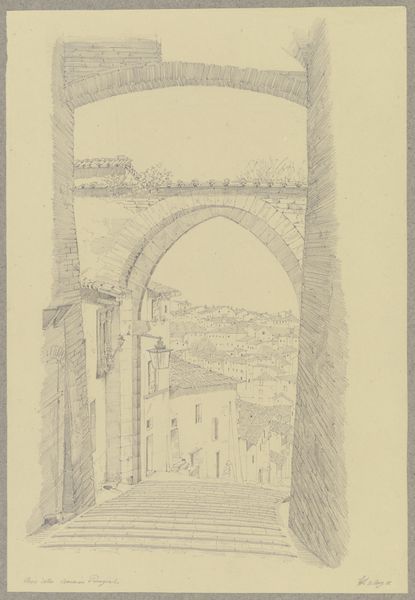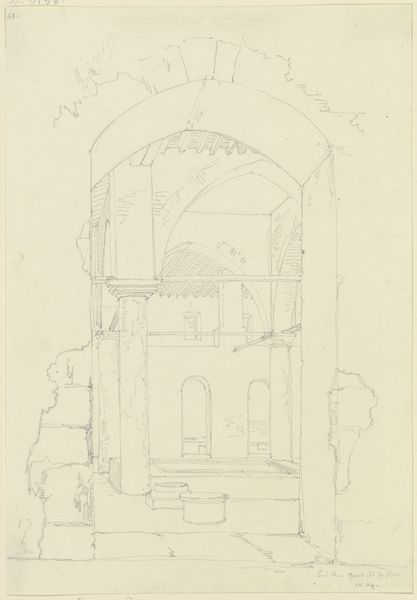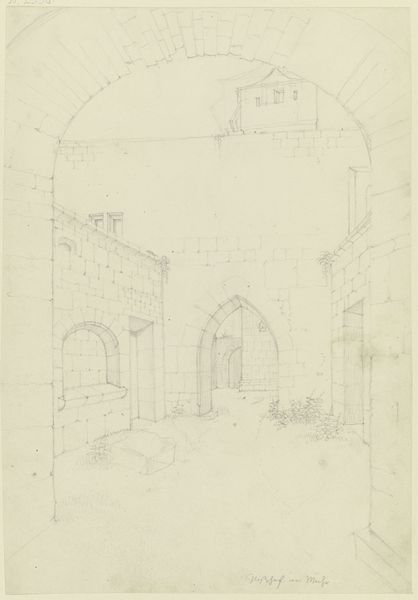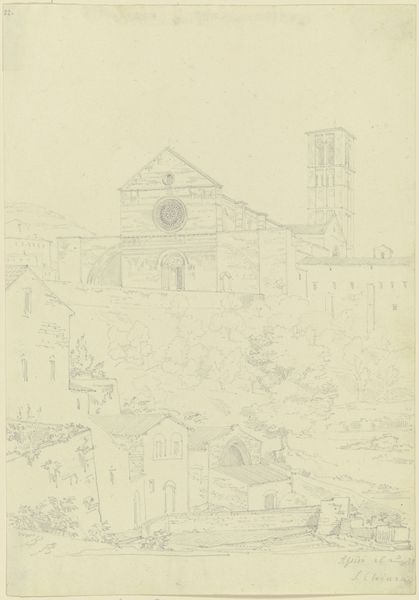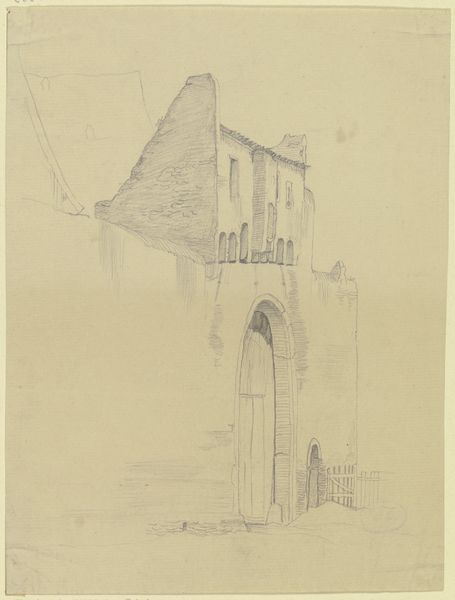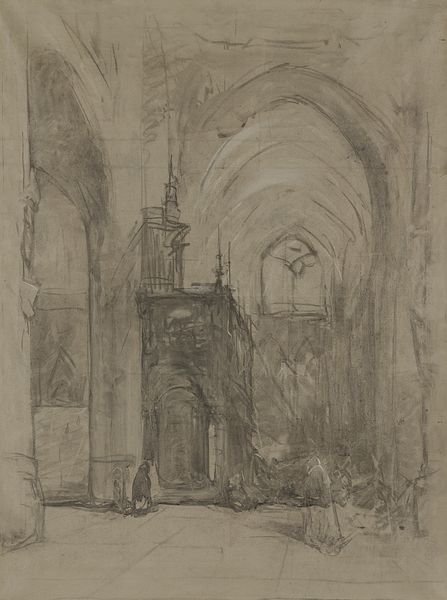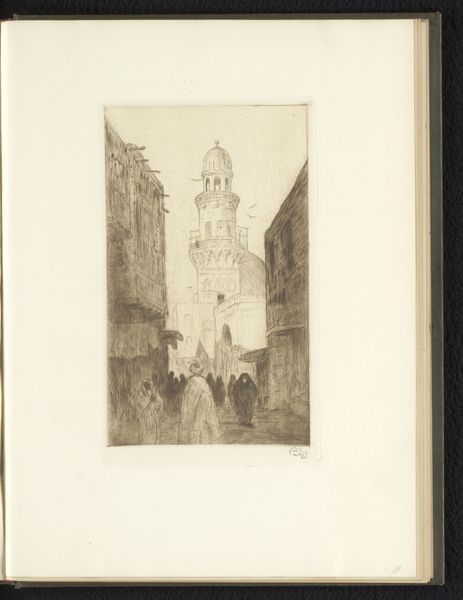
drawing, paper, pencil, architecture
#
drawing
#
16_19th-century
#
neoclassicism
#
landscape
#
etching
#
paper
#
pencil
#
cityscape
#
architecture
Copyright: Public Domain
Curator: This drawing is by Friedrich Maximilian Hessemer. It depicts the Basilica di San Giovanni in Laterano, Rome, and it's dated 1828. Editor: There’s a simple charm to this pencil and paper rendering, a quiet humbleness in the sketch-like quality. The basilica looms in the background, viewed through an archway. It almost feels like an unfinished idea, which somehow makes it more appealing. Curator: Hessemer was heavily influenced by neoclassicism. Here, he’s showcasing the grandeur of the architecture. The archway frames the basilica, focusing our attention on its symmetrical design and imposing scale within Rome’s urban fabric. This wasn’t just a drawing; it was a statement about the cultural significance of the Church within 19th century society. Editor: The materials themselves contribute to that statement. Pencil on paper… It’s a very direct medium, showcasing the labor and hand of the artist in a tangible way. We can almost see the marks he made, the pressure of the pencil as he built up the forms of the building, of its very construction, but one can also appreciate that this is a reproduction or rendition. It makes me wonder about Hessemer’s workshop practices or about his motivations when choosing these very materials. Curator: This basilica held enormous political weight as the seat of the Pope before the Vatican. Its appearance here reinforces the Catholic Church’s architectural dominance. Hessemer's choice to depict it from this framed perspective acts almost like a stage, a set piece meant to inspire reverence for the established order. Editor: Absolutely, that framing, though, also hints at access, control of vision. It almost speaks to the church and nobility maintaining control of what you see as the people, of the world, literally. Curator: I agree. And it captures a particular moment, too: Rome as it was then, undergoing constant changes. Hessemer's work freezes that urban evolution, gives the viewer an idealized cityscape amidst those societal shifts. Editor: Yes, through very modest means too. His attention to the means of production, to those architectural masses and their own manufacturing origins. Ultimately, this is about both idea and material. Curator: So it's more than just a picture; it's an index to a whole socio-political climate, embedded within architecture and artistic approach. Editor: Right, an exercise in visualizing both labor and belief.
Comments
No comments
Be the first to comment and join the conversation on the ultimate creative platform.
